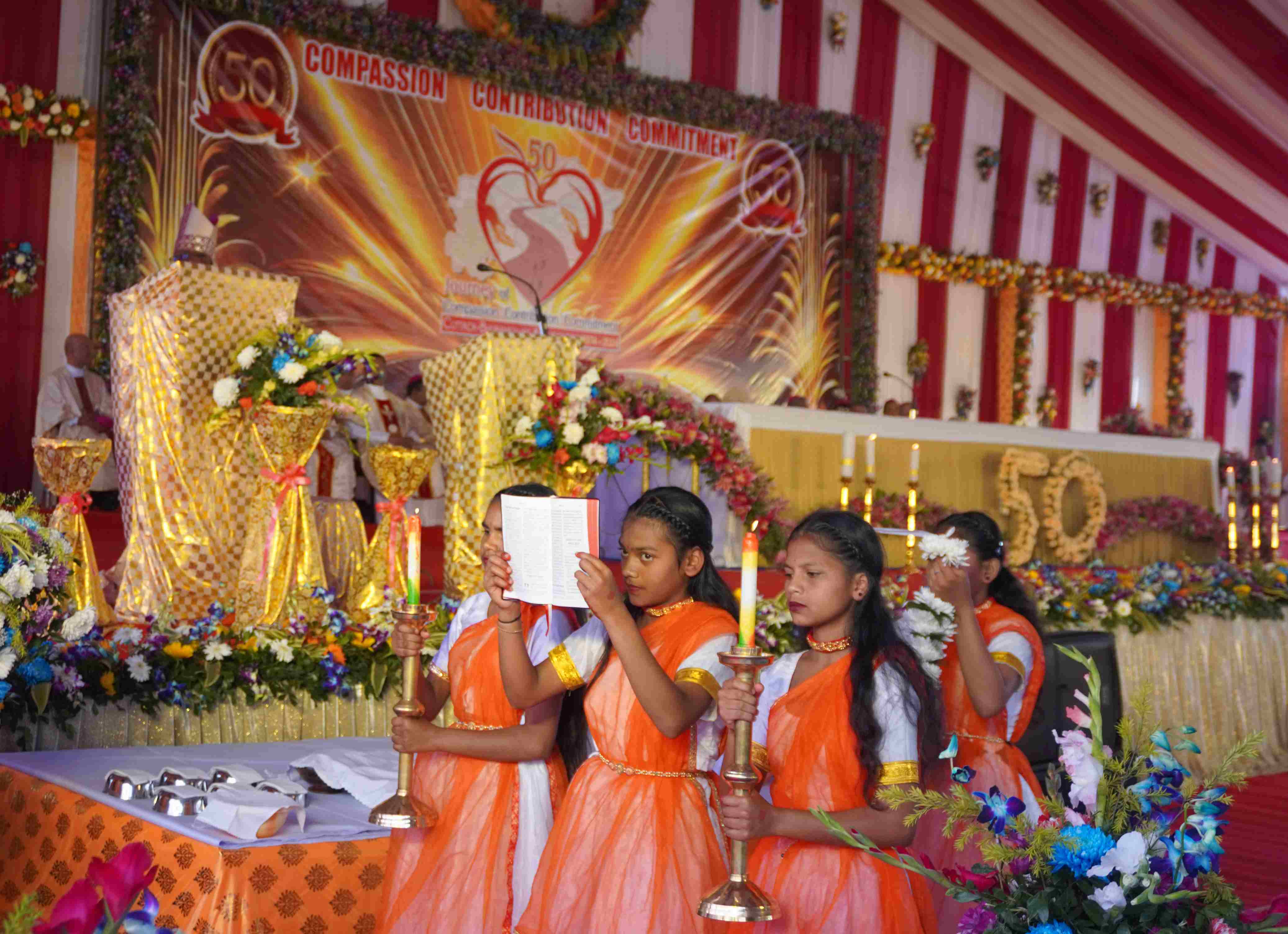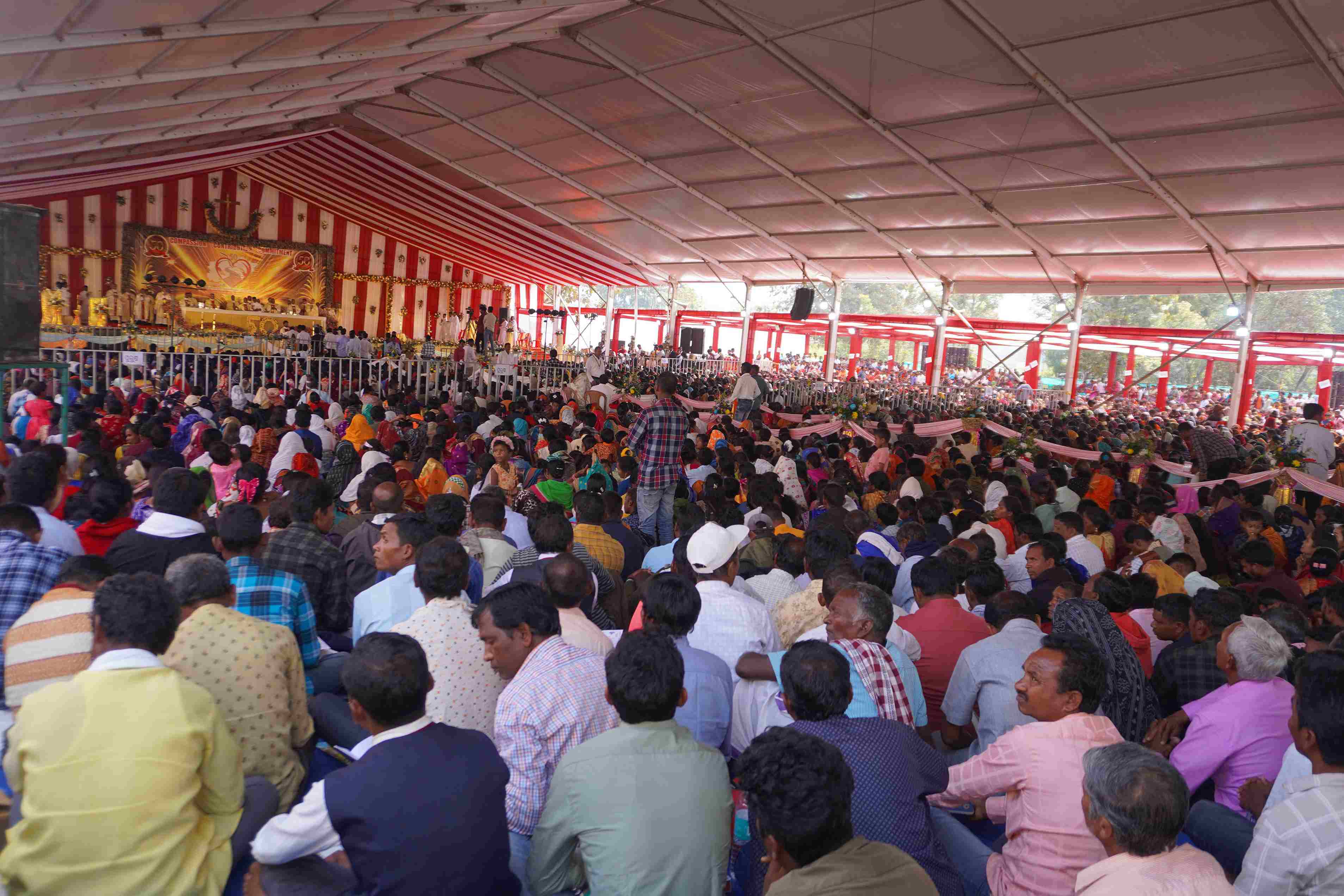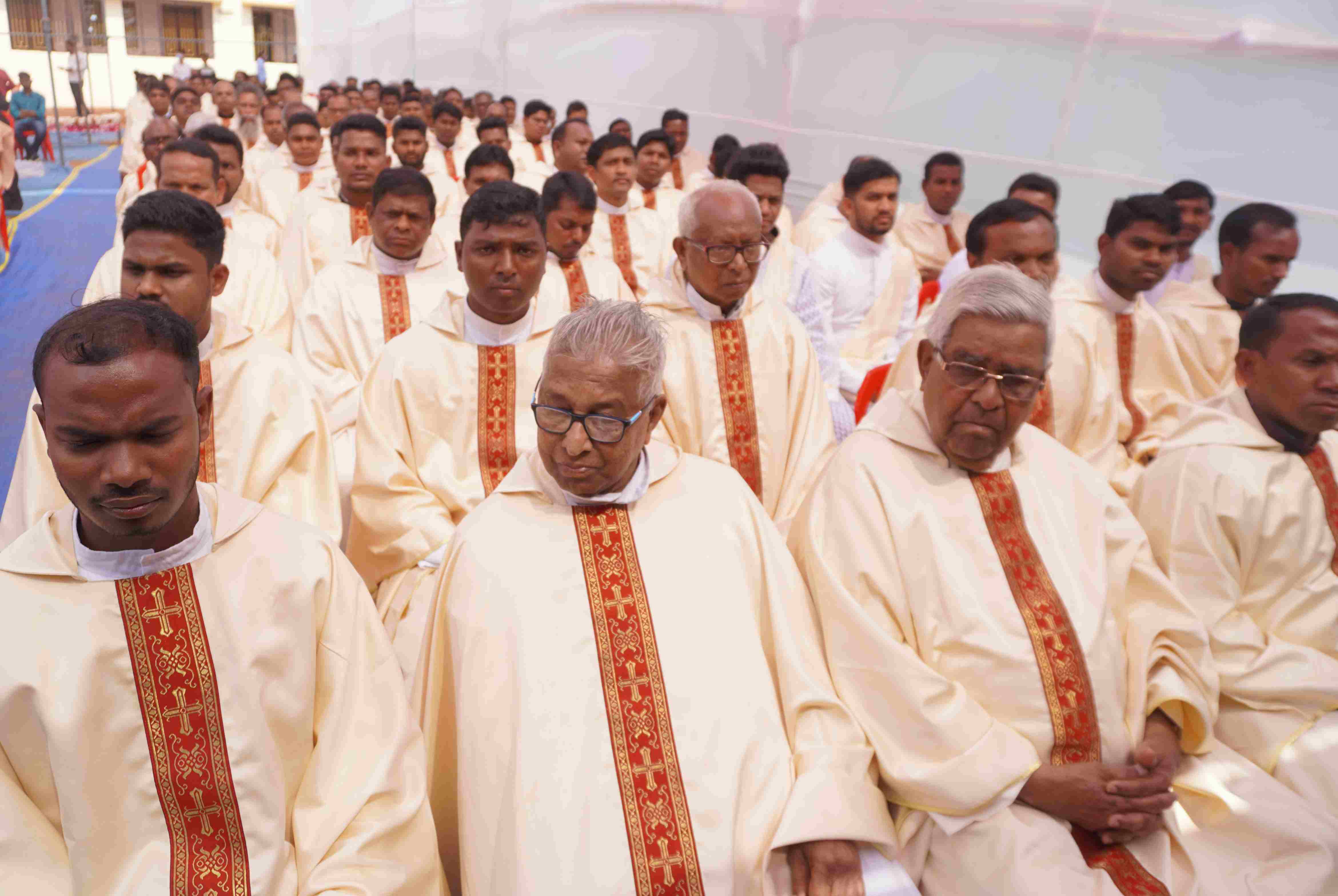Remembering the Martyrs, Kandhamal Celebrates 50 Years
Anto Akkara - February 2025

Thousands of Catholics milled the street and danced exuberantly, extending rousing welcome to two dozen bishops from across the country at Daringabadi in the jungle district of Kandhamal that had witnessed the worst persecution in modern times in India in 2008.
After the weeklong assembly of the Conference of Catholic Bishops of India (CCBI) at Bhubaneswar, capital of eastern Odisha state, the bishops traveled seven hours by bus to reach Daringabadi on Feb. 5 for the next day’s golden jubilee of Cuttack-Bhubaneswar Archdiocese with nearly 100,000 faithful in Kandhamal.
Enthusiastic youth danced merrily with rhythmic troupes to the tunes of boisterous bands while women in colorful ethnic dress, with traditional pitchers on heads, rushed to kiss the hands of the bishops as others twirled umbrellas.
“The whole of India and the world know we belong to Jesus,” proclaimed Archbishop Barwa, apparently hinting to the brutal persecution and incredible witness that has made Kandhamal a familiar name all over the world.
It was August 2008 when Christian properties and churches in the remote Kandhamal district, 150 to 250 miles southwest of Bhubaneswar, went up in flames following the mysterious murder of Hindu nationalist monk Swami Lakshmanananda Saraswati.

The body of the slain Hindu leader was taken across Kandhamal in a funeral procession for two days as his followers, touting the murder as a “Christian conspiracy,” called for revenge on Christians.
Hindu nationalist outfits subsequently banned Christianity in Kandhamal, and Christians were ordered to go into Hindu temples to recant their faith in Christ. Valiant Christians who defied the order were burnt alive, buried alive and even dismembered.
While nearly 100 Christians were killed, more than 300 churches and 6,000 houses were plundered in unabated violence, rendering 56,000 homeless.
Defying persistent bids by Hindu bigots to make the homeless Christians recant their faith even months later, thousands of penniless Christians fled Kandhamal to hold on to their faith þ hardly anyone forsook their faith in Christ.
After the Gospel reading on Feb. 5, Archbishop Barwa read out the decree from the Vatican Dicastery for the Causes of Saints that had granted in October 2023 a nihil obstat for putting 35 Catholic Martyrs of Kandhamal on the path to sainthood.
Though the archdiocese made elaborate preparation for early January 2024 to launch the “process of beatification for the martyrs of Kandhamal,” it was postponed at the 11th hour due to an appeal from top Odisha government and police officials to have it take place after the April-May national elections.
However, with the Hindu nationalist BJP winning the Odisha state election also in June, along with BJP returning to power for the third time nationally, the Church decided to celebrate in a more subdued manner at the jubilee this month.
“We cannot forget the sacrifices of the countless faithful who bore witness to Christ during one of the most challenging periods of Christian persecution,” said Cardinal Filipe Neri of Goa, CCBI president in his message, read aloud following the two-hour solemn Mass in which more than 200 priests concelebrated.

Describing Kandhamal as punya bhoomi (“sacred land”) of martyrs, Cardinal Neri extolled Kandhamal’s “shining testimony: Their steadfast faith and courage continue to inspire the Church in India and beyond.”
“I am very glad that I decided to join the group of bishops visiting Kandhamal after the CCBI assembly. I was amazed to feel and witness the vibrant faith of the Kandhamal Christians, about whom a lot has been said,” Bishop Alex Vadakkumthala of Kannur, in southern Kerala state, told EWTN News Feb 11.
“The ordinary people gave extraordinary witness to faith in Christ. It was manifest in their prayers, singing and dancing at the gold jubilee,” Bishop Vadakkumthala added.
The key places the bishops visited, including the burned pastoral center (at Konjamendi, 30 miles from Daringabadi), Bishop Vadakkumthala said, “inspire us how to overcome persecution and hostility.”
“It was indeed the greatest event in the history of Kandhamal Church,” 91-year old Father Casian Parichha, of Kandhamal, who attended the jubilee celebration, told EWTN News.
“You cannot even imagine the hardship we had undergone in the past. There were hardly any communication facilities nor proper roads. We had to move around on horseback or go on walking,” Father Parichha recalled, outlining the challenges he faced when he began priestly ministry in Kandhamal 61 years ago.
As for the orchestrated anti-Christian violence of 2008, Father Parichha said: “The sorrow of 2008 has been replaced by joy, as several of those who attacked our people have come to the Church. That is the goodness of Kandhamal I want to share.”
The seeds of the Catholic Church in Kandhamal was sown by Missionaries of St. Francis de Sales (MSFS), who established parishes beginning in 1845.
However, during World War I, the French missionaries were recalled. In 1922, four Spanish Vincentian priests from the Congregation of the Mission (CM) arrived in Odisha, succeeding the MSFS missionaries.
In 1937, the Odisha mission was raised to the status of a diocese; and in 1974, the diocese was elevated to an archdiocese, with the name Cuttack-Bhubaneswar.
The vast 3,100-square-mile jungle district of Kandhamal is sparsely populated, with its population presently around 800,000 souls.
Observed Father Parichha, “But the good news is that the number of Catholics has gone up from 19,000 in 1960s to nearly 100,000.”
(Courtesey: Nathional Catholic Register)
Send your feedback to : onlinekeralacatholic@gmail.com